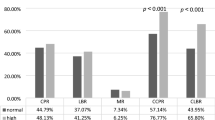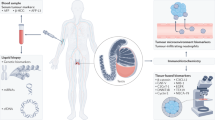Abstract
We investigated the prognostic value of the serum half-life of human chorionic gonadotrophin (HCG) and alpha-fetoprotein (AFP) during induction chemotherapy and the relative prognostic importance of initial marker concentrations and marker half-life. Marker half-lives were calculated using two abnormal values observed between day 8 and day 22 of the first chemotherapy cycle. Moreover, analyses were carried out using day 43 as the second measurement point. Treatment failure at any time was chosen as the end point. The relative prognostic influence of marker half-lives and initial marker concentrations was tested in univariate and multivariate analyses. Half-lives were considered to be prolonged if > 3 days for HCG and > 6 days for AFP. In addition, we separated patients into those with half-lives > 6 days for HCG and those with half-lives > 10 days for AFP to examine whether these long half-lives were associated with a poor prognosis. A group of 669 patients treated with cisplatin combination chemotherapy was studied. Forty-two per cent of the patients had normal HCG and 37% had normal AFP at the start of chemotherapy. At day 22, HCG was still elevated in 138 patients and AFP in 211. At day 43, the numbers of these patients were 35 and 80 respectively. Based on the measurements obtained on day 8 and day 22, a half-life of HCG > 3 days or > 6 days and/or a half-life AFP > 6 days or > 10 days did not accurately predict treatment failure (P=0.413 and P=0.851, respectively; values obtained using tests for trend). However, initial marker concentrations of HCG and/or AFP > 1000 IU l(-1) were highly significant prognosticators for treatment failure (P=0.001 and P < 0.001 respectively), independent of half-life values. Half-lives calculated with the values obtained on day 43 did not contribute to the accuracy of the prediction of treatment failure. We conclude that half-lives of HCG and AFP during induction chemotherapy are inaccurate parameters for the prediction of treatment failure. In contrast, initial serum concentrations of HCG and AFP are highly significant in the prediction of unfavourable treatment outcome.
This is a preview of subscription content, access via your institution
Access options
Subscribe to this journal
Receive 24 print issues and online access
$259.00 per year
only $10.79 per issue
Buy this article
- Purchase on Springer Link
- Instant access to full article PDF
Prices may be subject to local taxes which are calculated during checkout
Similar content being viewed by others
Author information
Authors and Affiliations
Rights and permissions
About this article
Cite this article
de Wit, R., Sylvester, R., Tsitsa, C. et al. Tumour marker concentration at the start of chemotherapy is a stronger predictor of treatment failure than marker half-life: a study in patients with disseminated non-seminomatous testicular cancer. Br J Cancer 75, 432–435 (1997). https://doi.org/10.1038/bjc.1997.71
Issue Date:
DOI: https://doi.org/10.1038/bjc.1997.71
This article is cited by
-
Logarithmic decrease of serum alpha-fetoprotein or human chorionic gonadotropin in response to chemotherapy can distinguish a subgroup with better prognosis among highly malignant intracranial non-germinomatous germ cell tumors
Journal of Neuro-Oncology (2011)
-
Early prediction of treatment response to high-dose salvage chemotherapy in patients with relapsed germ cell cancer using [18F]FDG PET
British Journal of Cancer (2002)
-
125I-labelled human chorionic gonadotrophin (hCG) as an elimination marker in the evaluation of hCG decline during chemotherapy in patients with testicular cancer
British Journal of Cancer (1999)



